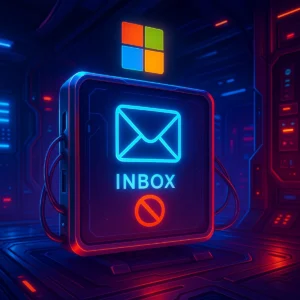Microsoft Outlook, one of the world’s most popular email platforms,...
Read More
In today’s world where your inbox is overloaded world, grabbing someone’s attention is half the battle, especially when reaching out to forge new professional connections.
One of your most powerful tools? A killer subject line. By thoughtfully tailoring each subject line to your recipient and the context of your outreach, you can dramatically boost open rates, spark genuine interest, and set the tone for a productive relationship.
Below, we’ll explore why subject lines matter so much in networking emails, offer practical guidelines for writing them, and share examples that can inspire your next outreach.
Why Great Subject Lines Are Essential For Networking
- First impressions count: Your subject line is the initial “hook” that prompts recipients to open or ignore your email. In a crowded inbox, a well crafted subject stands out.
- Set the tone & expectation: A concise, relevant subject line lets recipients know the purpose of your message no matter what the subject matter might be. For example if you are seeking advice, following up on a meeting, or making an introduction.
- Builds trust: Overly vague or clickbait style lines can undermine credibility. A subject that is genuine, direct, & respectful resonates better with professionals as well as decision makers.
Key Principles For Effective Networking Email Subject Lines
Clarity Over Cleverness
While witty phrasing can sometimes grab the attention of the recipient, clarity is crucial.
Recipients looking through their inbox should immediately understand the topic of your email or even its value.
If your subject line is too cryptic, they might pass over it or accidentally take it for spam.
Example
“Would love your thoughts on [Topic]”
instead of
“Any chance we can synergy real quick?”
Brevity Wins
Email clients on mobile screens tend to truncate subject lines.
Keep them short, round 6 to 10 words.
This ensures your entire message subject remains visible, which in turn increases your chances of catching and keeping the recipients attention.
Example
“Quick intro from [Your Name] at [Company]”
Personalization Is Key
A personalize subject line signals that the email was crafted for them and not blasted to a massive mailing list.
Mention their name, a mutual contact, or a shared experience.
Example
“Hi [Name], loved your recent article on [Topic]!”
Showcase Relevance Or Value
Networking is mutual. You are looking to establish a connection, but your recipient wants to know “What is in it for me?”
If possible, hint at a specific benefit, insight, or context that appeals to their interests.
Examples
“A quick idea to boost your [specific metric or goal]”
“Following up with a lead from [Conference Name]”
Types Of Networking Emails & Matching Subject Line Styles
The Introductory Email
Context: You are reaching out to someone you have never met but want to connect with, possibly a respected professional, influencer, or perspective mentor.
- Focus: Acknowledge who you are & why you are reaching out.
- Subject Line: Could reference a mutual connection, a recent event, or a shared interest.
Examples
“Hi [Name], quick intro from a fellow [Industry/Role] professional”
“Found your insights on [Topic] valuable—can we connect?”
The Follow Up Or "Nice To Meet You Email"
Context: You recently met someone at an event or on a virtual call, & you would like to strengthen that initial connection.
- Focus: Remind them who you are & where you met, then suggest next steps to stay in touch.
- Subject Line: Mention the event or context so they recall the interaction.
Examples
“Great meeting you at [Event]: Continuing our conversation”
“Enjoyed chatting about [Topic]—here’s the resource I mentioned”
The Referral Or Warm Introduction Email
Context: You have a mutual acquaintance who suggested to connect with you. This adds credibility.
- Focus: Highlight the referral source in the subject line for instant recognition.
- Subject Line: Use the referrer’s name to build trust and credibility from the start.
Examples
“[Mutual Contact Name] suggested we connect”
“[Name] recommended I reach out—quick question about [Topic]”
The Value Proposition Email
Context: You are not just introducing yourself, you are offering a solution, insight or invitation to collaborate.
- Focus: Show immediate benefit or curiosity about how you can help them.
- Subject Line: Mention the potential outcome or improvement they would see from connecting.
Examples
“[Name], I have a quick idea for your [Specific Goal]”
“Could we reduce [Pain Point/Metric] for your team?”
The "Thought Leader" or Content Sharing Email
Context: You share relevant articles, studies, or blog posts that might interest them, with subtle intention of starting a conversation.
- Focus: Position yourself as a knowledgeable peer, not just a sales person.
- Subject Line: Tease the valuable content or data to pique curiosity.
Examples
“[Name], a quick read on [Topic] I think you’ll love”
“New research on [Problem/Trend]—here’s the summary”
Best Practices To Reinforce Subject Lines That Convert
Use A Conversational Tone
Networking is about relationship building, not formality alone.
While you do not want to be overly casual, avoid robotic or stiff language.
A friendly but respectful tone performs well.
Be Specific
Vague subject lines like “Just checking in” or “Hello there!” do not convey urgency or relevance.
Alternatively pinpoint the core reason for reaching out: “Quick 5 minute consult about your upcoming event?”
A/B Test When Possible
If you are reaching out to multiple contacts, such as from a conference list or LinkedIn connections, experiment with 2 variations of subject lines.
Track open rates to see which resonates better, & refine future outreach based on these insights.
Avoid Clickbait
Exaggerated or misleading subject lines such as “URGENT!” or “You won’t believe what I found…” might prompt some opens, but you will lose credibility if the content inside does not match the promise.
Remember: trust is key in networking.
Mind Character Limits
On mobile devices, you may only have a 30 to 40 character limit before the subject line gets cut off. Place the most critical information or personalization at the front.
Common Networking Email Subject Line Mistakes & How To Fix Them

Being Overly Familiar
Mistake:
“Hey buddy!” (to someone you haven’t actually met).
Fix:
Use professional courtesy—“Hi [Name], hope you’re doing well.”
Using Multiple Emojis Or All Caps
Mistake:
“\uD83D\uDE0AREAD THIS ASAP!!\uD83D\uDE0A
Fix:
Reserve emoticons or exclamation points for more informal interactions and keep it subtle.
Too Much Information
Mistake:
“Can I schedule 15 minutes to discuss synergy between our solutions, reduce your overhead by 20%, and integrate your marketing approach?”
Fix:
Focus on one compelling point—brevity fosters clarity.
No Personalization
Mistake:
“Hello, let’s connect.”
Fix:
“Hi [Name], let’s connect about [shared interest] or [specific event].”
Missing Or Unclear Intent
Mistake:
“Checking in…” with no context as to why or how.
Fix:
“Checking in about your [project/challenge]—next steps?” to underscore a mutual topic.
Putting It All Together: Example Of A Winning Subject Line Sequence
Let us imagine you met someone named “Chris” at a marketing conference.
You want to follow up, share a relevant resource, & eventually explore a potential collaboration.
Subject Line
“Hi Chris—great chatting at [Conference Name]”
Why it works: It reminds them who you are and where you met.
Follow Up Email
“Chris, your feedback on [Topic] was spot on—here’s the article I mentioned”
Why it works: It points to something valuable, referencing the previous conversation.
Next Outreach
“Any thoughts on that content, Chris? Let’s brainstorm further”
Why it works: Invites a two-way dialogue, continuing the relationship and gently nudging them for a response.
Conclusion
Securing high email opening rates & meaningful engagement from your networking emails starts, and often end with your subject line.
Whether you are reaching out to a newly met contact, requesting a favor, or sharing resources, a concise, personalized & relevant subject line sets the stage for a fruitful interaction.
To recap:
- Keep it short & transparent. Prospects decide to open (or ignore) in seconds.
- User professional personalization. Avoid generic greetings or creepy deep dives.
- Communicate value. Mention the reason you are reaching out & how it benefits them.
- Maintain consistent testing & adaptation. Monitor open rates & iterate to find what resonates best.
If you apply these strategies, you can break through the inbox clutter, forge stronger professional bonds, & transform simple email exchanges into meaningful opportunities for collaboration & success.
Tesla Robotaxi Service Arrives: What It Means for the Future of Autonomous Transportation
Tesla has finally launched its long awaited robotaxi service, marking...
Read MoreTaking Secure Browsing Further: Advanced DNS Privacy and Parental Controls on OPNsense
Advanced DNS privacy OPNsense is a growing concern for anyone...
Read MoreIranian Cyber Threats to U.S. Critical Infrastructure
The U.S. government has issued a new warning about Iranian...
Read More



Leave a Reply